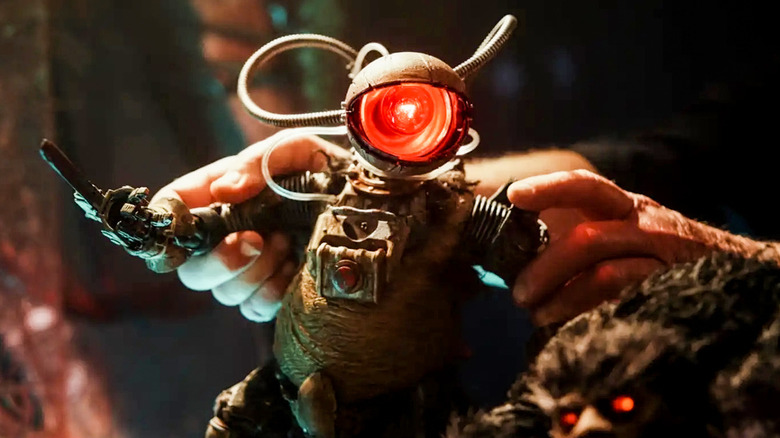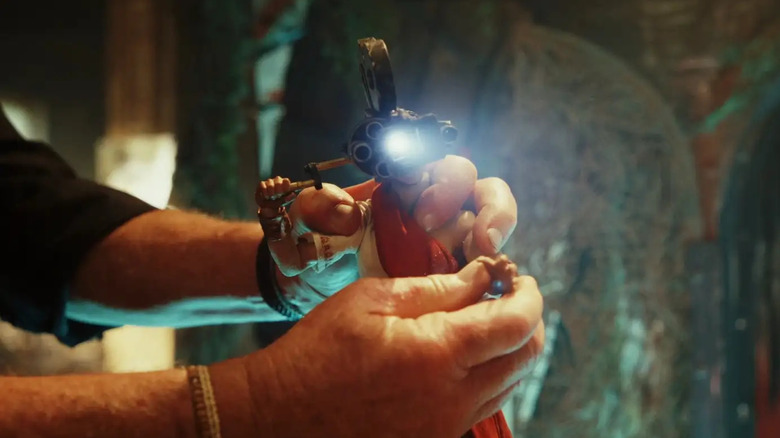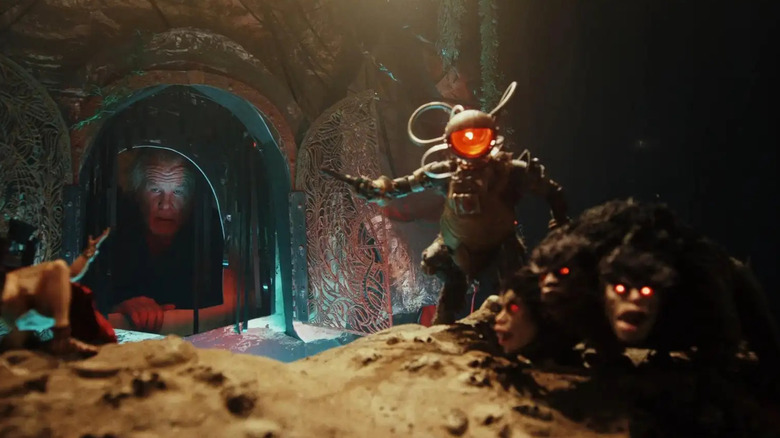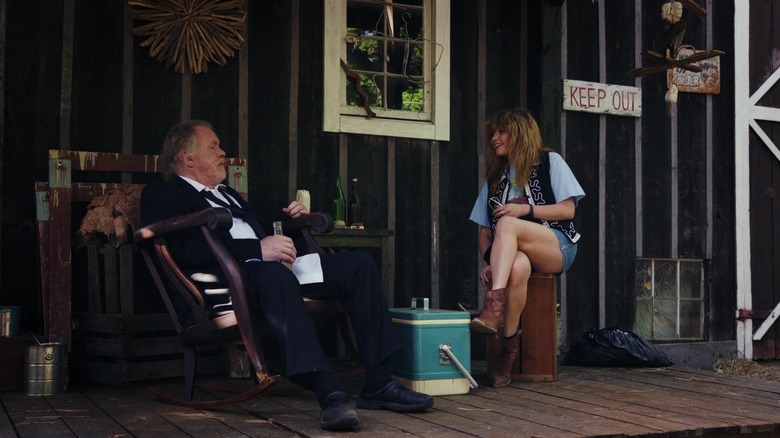Star Wars VFX Legend Phil Tippett Helped With Poker Face's Stop-Motion Animation Episode
Rian Johnson's Peacock series "Poker Face" has had some serious talent both in front of the camera and behind-the-scenes, but episode 8, "The Orpheus Syndrome," employed the talents of one of the greatest special effects masters in Hollywood history.
The episode featured the work of visual effects legend Phil Tippett, who helped bring the creatures of "Star Wars" to life and won his first Academy Award for his work on "Return of the Jedi." Tippett, who has worked in the industry for decades, provided all of the models and set pieces for the episode, which centers around a special effects artist named Arthur (Nick Nolte) who feels guilty about a tragic death on a production years before. Arthur's workshop is the stuff of dreams and nightmares, with Tippett creations peeking from every nook and cranny. We eventually get to see them in motion, and when we do, Tippett's special brand of movie (and TV) magic is fully revealed.
In an interview with The Wrap, Tippett shared the story of how he ended up working on the Peacock series and what kinds of requests Johnson had for him and his team. He also revealed the special bond he developed with series star Natasha Lyonne, born out of the desire to be left the heck alone, which sounds a lot like the bond Lyonne's character Charlie develops with Arthur. They always say that art imitates life, but sometimes it goes both ways.
Star Wars, stop motion, and a murder mystery
Tippett and Johnson first got to know one another when Johnson was working on "Star Wars: The Last Jedi" at Skywalker Ranch, which is near where Tippett lives. The two bonded over a mutual love of stop-motion animation and became friends, so when Johnson started working on "Poker Face" and realized he wanted an episode with stop motion in it, he reached out to Tippett. Johnson explained that he wanted to do an episode based around stop-motion animation and a stop-motion animator, but he and Lyonne (who helped create the series) gave Tippett free reign:
"He had some ideas when we met with both he and Natasha Lyonne over Zoom and discussed what they had in mind, which was to have based stop-motion characters around certain mythological creatures. We made them and shot them. Rian pretty much gave us carte blanche on it. He just said, once it was established what these things needed to do and where they were going to be and what the lighting was, he just said, 'Do your magic.' We didn't get any notes. We just delivered. He just said, 'Deliver as final shots.' That was it."
There are few words in this world more incredible to a creative than "do your magic." (Seriously, they're up there with "invoice paid" and "pitch accepted.") Having carte blanche to do whatever you want in a project, with a budget, is the dream. In return, Tippett gave Johnson and the "Poker Face" audience some seriously cool creations.
A menagerie of monsters
The mythological creatures that Tippett created for "Poker Face" bear some resemblance to the creations the artist made for his massive personal project, "Mad God," which is wonderful. They have that Tippett mark, that stamp of his creative touch, and they're also just really stinking cool. For "The Orpheus Syndrome," Tippett created several creatures, including a man with a camera for a head, a red-light monster that reminds me of old-school submarine helmets, a mangy Cerberus, and a head with a woman bursting forth from it. It's wild stuff on top of some very realistic practical special effects work, like a bust recreation of an actor's face, showing the full spectrum of Tippett's incredible skills.
It took Tippett 30 years to make "Mad God" and get it distributed, but I'm thrilled that more people will finally be able to discover his work. Many probably already know his work from movies like "Star Wars," "RoboCop," and "Jurassic Park," but they've never learned his name because special effects work unfortunately goes largely uncelebrated. Maybe "Poker Face" can get people interested in this vital craft, and creatives like Tippett can finally get the respect they deserve. "Mad God" nearly drove poor Tippett a bit mad himself, but it did give him something to talk about with Lyonne when the two bonded on set.
Bonding over brutal projects
When on the set of "Poker Face," Tippett said he would go take his lunch break by himself in order to not be bothered with "Star Wars" questions and things of that sort. He would take his lunch and go into the barn on set and eat, and it turns out Lyonne had a very similar idea. The two ended up chatting about their toughest projects and bonding over their experiences:
"We spent the lunch hour just having this great conversation. We bonded over her experience on 'Russian Doll' and mine on 'Mad God.' They were very, very similar, because both of those shows totally broke us as human beings. Really, seriously, psych ward, rehab-type stuff because we just dump everything into it and you don't meet too many people that you can share that kind of experience with, as in none. I would bum cigarettes from her and we would spend a really enjoyable hour."
Oh, to be a fly on that barn wall. Lyonne took over as showrunner on season 2 of the Netflix series "Russian Doll" while also writing, directing, and starring in the series, so it was a grueling experience that must have taken a lot out of her. (She even learned Hungarian!) Diamonds are forged under high pressure, though, and both "Mad God" and "Russian Doll" are true gems.
New episodes of "Poker Face" debut on Thursdays, exclusively on Peacock.



